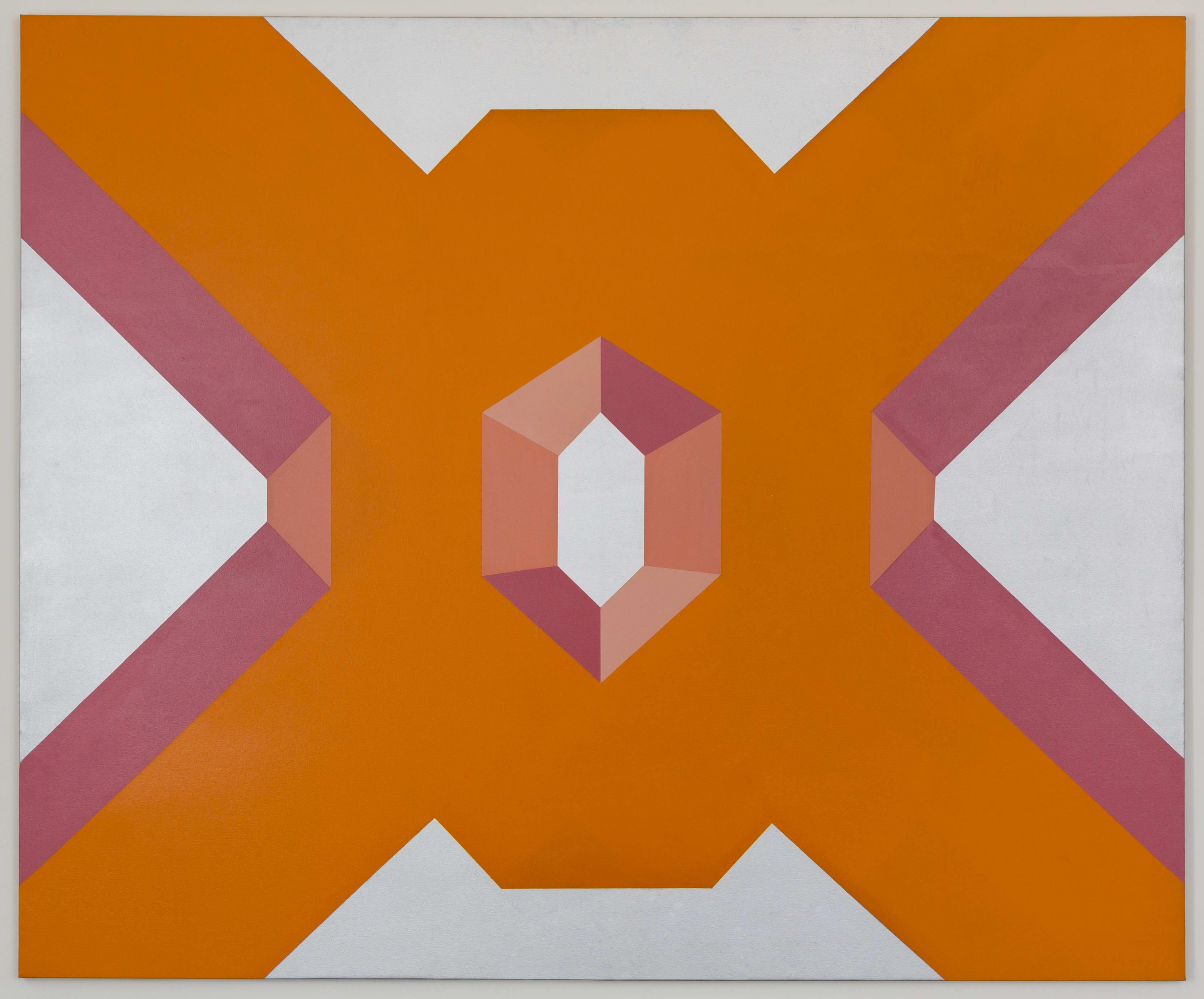Big Ox, 1967

Eric Firestone Gallery
Beginning in 1965, Miriam Schapiro became one of the first artists to use computer imaging as a tool to develop her hard-edged geometric work. She began to work with what would become a recurrent motif: a grid of sixteen windows. In 1967, along with her husband Paul Brach, she moved from New York to teach at the University of California, San Diego. There, she worked with a physicist, developing a system that allowed her to feed a drawing into the computer and generate infinite variations. The resultant work is abstract but multi-referential: suggesting the light of California, its modernist architecture, the tactility of earth meeting water, and the body. What drove her work, however, was the necessity of creating a feminist aesthetic that would embody the political in visual language. Of her painting Big Ox (1967) she once said, ‘The painting is a very strong image with a seemingly neutral subject – the letter O superimposed on the letter X. The O was actually a hexagon with a pink labial interior, whose geometry masked its sexual meaning. In painting this image I behaved unconsciously, like all women artists mentored by men.’
Miriam Schapiro (born 1923 in Toronto) is widely known as a pioneer of the Women’s Art Movement. She was the first woman to have a solo exhibition at the André Emmerich Gallery in 1958. In 1972, Schapiro came to CalArts where, along with Judy Chicago, she formed the Feminist Art Program. In the 1970s, Schapiro began incorporating decorative objects made by women into her paintings to create what were called ‘femmages.’ She was also one of the foundering members of the Pattern and Decoration movement. Schapiro died in 2015 in New York.